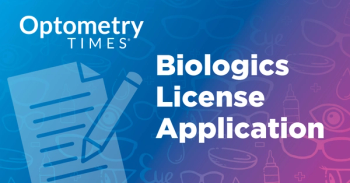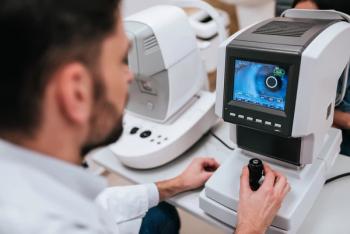
New gatifloxacin solution offers enhanced formulation
The availability of a new formulation of gatifloxacin ophthalmic solution containing 0.5% of active ingredient provides optometrists with a valuable option for addressing the growing problem of resistance among some important ocular pathogens.
Salt Lake City-The availability of a new formulation of gatifloxacin ophthalmic solution containing 0.5% of active ingredient (Zymaxid, Allergan) provides optometrists with a valuable option for addressing the growing problem of resistance among some important ocular pathogens, said Randall J. Olson, MD.
On May 19, Allergan announced that it received FDA approval to market its new, more potent formulation of gatifloxacin ophthalmic solution for the treatment of bacterial conjunctivitis. The product offers the proven broad-spectrum activity of gatifloxacin against common gram-positive and gram-negative ocular pathogens in a preparation containing a two-thirds higher concentration of active ingredient compared with the original formulation, gatifloxacin 0.3% (Zymar). Like Zymar, Zymaxid is preserved with benzalkonium chloride (BAK).
"The topical route of administration used to treat bacterial conjunctivitis provides the opportunity for overcoming higher bacterial MIC values by achieving a higher concentration of the anti-infective agent in the target tissue through direct delivery," he said.
Dr. Olson explained that with its higher concentration, each drop of gatifloxacin 0.5% should theoretically achieve a peak concentration of the anti-infective agent at the target tissue that is about two-thirds higher than that achieved using the 0.3% formulation as well as an even greater increase in the area under the concentration-time curve (AUC) and duration of time that the target tissue concentration remains above the target pathogen's MIC value.
"Considering that fluoroquinolones are concentration-dependent antimicrobial agents for which therapeutic outcome is dependent on the pharmacokinetic/pharmacodynamic parameter of AUC/MIC for a given pathogen, the pharmacokinetics advantages of gatifloxacin 0.5% should translate into increased clinical efficacy," he said.
The presence of BAK in the new commercially available ophthalmic preparation of gatifloxacin is an additional advantage. Results from several studies show that BAK acts together with gatifloxacin to provide increased antibacterial activity, he noted.
"In a recently published study from our institution," he continued, "we reported on the use of scanning electron microscopy to visually examine the antibacterial effects of gatifloxacin alone or with BAK on an ocular isolate of MRSA [J Ocul Pharmacol Ther 2010;26:133-6]. The results from blinded review of structural changes and mitotic activity visualized in the SEM images showed statistically significant advantages of the combination of gatifloxacin with BAK compared with gatifloxacin alone."
Gatifloxacin 0.5% ophthalmic solution is indicated for treating bacterial conjunctivitis in patients aged 1 year and older for infections caused by susceptible strains of Haemophilus influenzae, Staphylococcus aureus, Staphylococcus epidermidis, Streptococcus mitis group*, Streptococcus oralis*, and Streptococcus pneumoniae (Editor's note: Asterik indicates efficacy for this organism was studied in fewer than 10 infections). The recommended dosage is one drop every 2 hours in the affected eye(s) while awake, up to 8 times on the first day, and then 2 to 4 times daily while awake on days 2 to 7.
Newsletter
Want more insights like this? Subscribe to Optometry Times and get clinical pearls and practice tips delivered straight to your inbox.








































